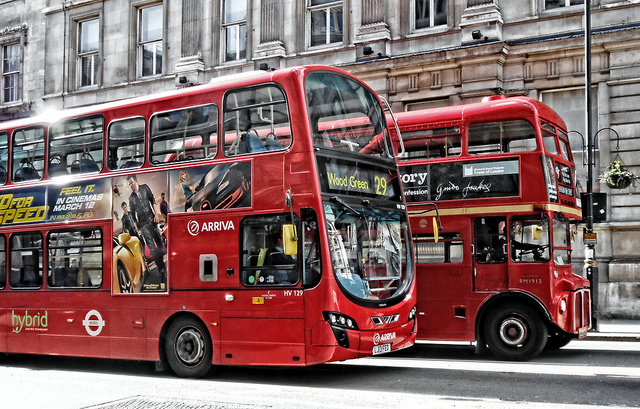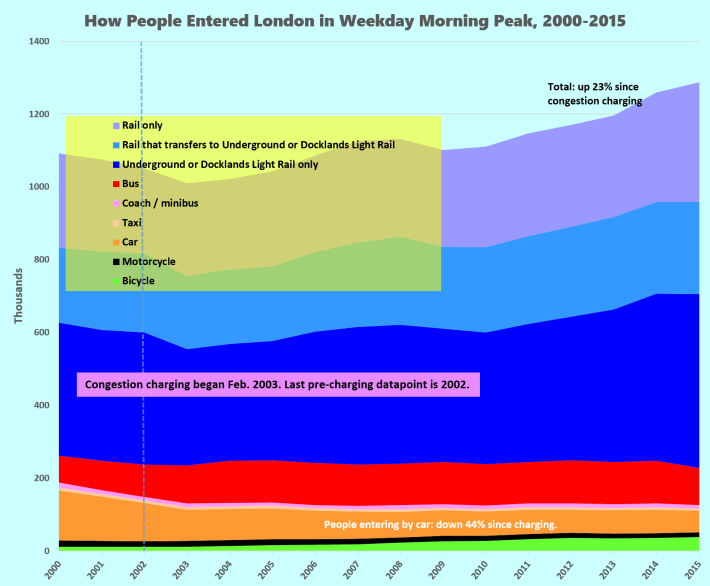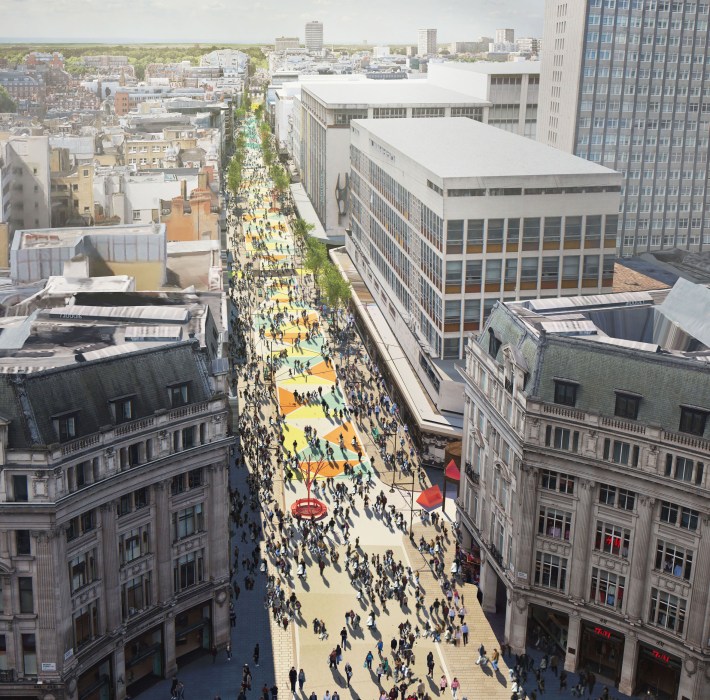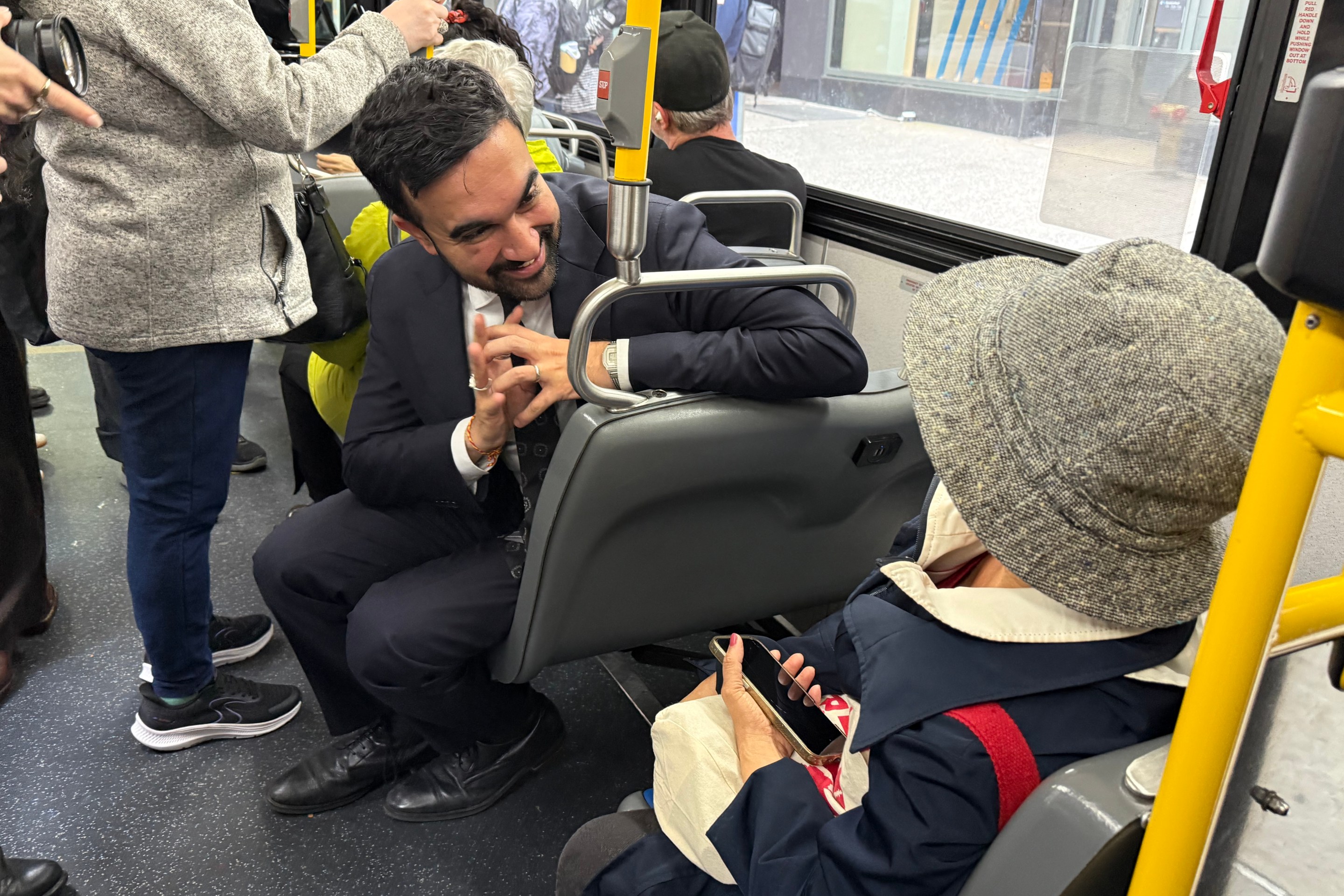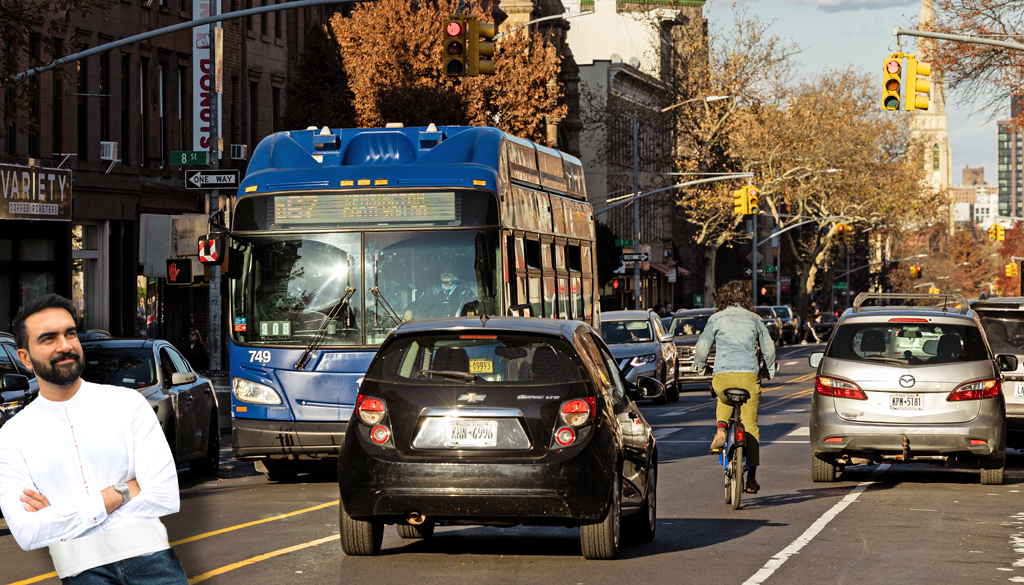Congestion charging has averted what would likely have been a precipitous fall in London travel speeds over the past 15 years, according to my analysis of mode-share data from Transport for London, the government agency responsible for that city’s transport system.
With a population equal to New York City’s 8.5 million and a central business district the same size as Manhattan’s, London’s congestion charging scheme has been a natural template for New York since its inception in early 2003. Indeed, its success in cutting car volumes and shortening commutes inspired Mayor Bloomberg’s 2007-08 congestion pricing initiative.
Now, however, reports that London travel speeds have reverted to their pre-charging norm have bred misgivings that Governor Andrew Cuomo’s pending congestion pricing plan is intended solely as a revenue-raiser and not as an antidote to worsening gridlock.
What those worries overlook is that the number of automobiles entering London’s center each day has plunged by 44 percent since the start of congestion charging, from 105,000 to 59,000, even as the total number of people entering by any means grew from 1,050,000 to 1,287,000, a gain of 23 percent. (Figures are from Transport for London and compare 2002 to 2015, the last year with available data.)
If the number of entering autos hadn’t changed, central London traffic speeds would be more than 20 percent below their 2002 levels, according to my modeling. And if the number of autos had risen in proportion to the expanding numbers of people entering the charging zone -- a reasonable assumption in the absence of congestion charging -- the decline in traffic speeds would have been a calamitous 32 percent.
It’s true that these assertions are counterfactuals -- might-have-been's standing in for actual events. But while we can’t know exactly how London streets would be different today if automobile entries had stayed the same or grown -- we can infer, and quantify, what might have happened.
As follows:
- I assumed that prior to congestion charging, cars driven into the charging zone accounted for a third of miles traveled there, with in-zone autos and commercial vehicles (vans, trucks, taxicabs) responsible for the remainder. Assuming those modes have held constant, the 43.8 percent decrease in automobile entries equates to a 14.6 percent decline in overall in-zone vehicular travel.
- Anecdotal but widespread evidence suggests that central London travel speeds in 2015 were the same as in 2002. For that to happen, motor vehicle capacity would have had to decline in tandem with the 14-15 percent drop in traffic volumes; that shrinkage jibes with London's addition of bus lanes, bike lanes, public plazas, and civil works like pedestrianized streets.
- The first counterfactual question then becomes: how far would London travel speeds have dropped if road capacity shrank by 14-15 percent while traffic volumes stayed the same? The “speed-volume” equation in my BTA spreadsheet model can answer that question for Manhattan (see instructions at end): It predicts a 22 percent drop in CBD vehicle speeds.
- The second counterfactual is the same as the first except that traffic volumes rise by 7-8 percent (or one-third of the 23 percent overall increase in the number of people traveling to the charging zone) while motor vehicle capacity shrinks. The BTA equation yields a 32 percent decrease in vehicle speeds.
Depending upon the scenario chosen, then, if not for congestion charging, central London travel speeds would now be at least one-fifth and perhaps one-third slower. In New York, the direct costs in lost time from such a slowdown would be on the order of a billion dollars a year. London, a city as wealthy as New York, would have been saddled with similar costs.
Are motor vehicles moving faster in the heart of London today than they did before congestion charging? Evidently not. But the combination of charging with reconfigured road space and transit expansion has enabled London to absorb more than a 20 percent increase in central London commuting, without skipping a beat. That’s no small feat.
To see calculations: Download the BTA spreadsheet (xls). In Results tab, use pull-down menu attached to Cell I25 to switch to Baseline scenario. In User Inputs tab, set Cell 162 (street space repurposed from autos) to 132 lane-miles (that’s 14.6 percent of the CBD’s 907 lane-miles). Now, back in Results, see that the big blue box at Cell B13 shows a change in travel speed of negative 21.6 percent. (That finding takes into account that some car trips that have lost their utility for their drivers would disappear.) Procedure for second analysis with assumed 7-8 percent rise in volume is same except that effective decrease in road capacity would have been 22 percent, or 200 lane-miles. Inputting that in User Inputs yields a negative 32.4 percent change in travel speeds. Note that the BTA changes continually w/ new data, so results at a later date may vary.
[You can download A more detailed, illustrated version of this post from the author's website.]
